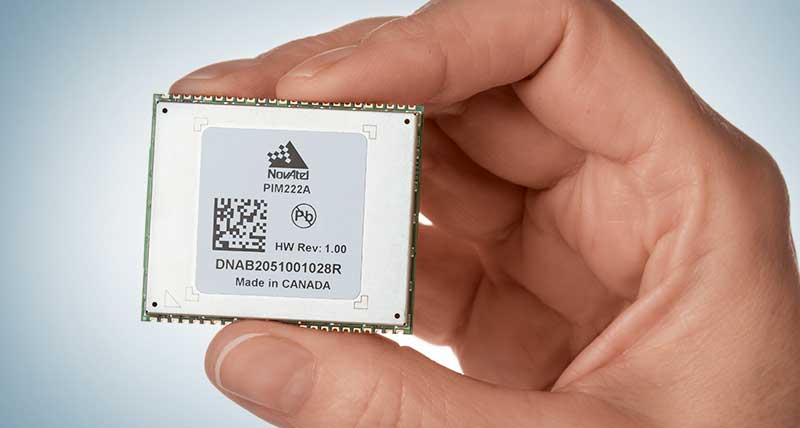Hexagon | NovAtel has introduced the PIM222A, part of a new family of automotive GNSS positioning products for advanced driver assistance systems (ADAS) and autonomy. The PIM222A delivers precise positioning, velocity and attitude in the most demanding applications for mass deployment in ADAS applications and autonomous vehicles.

Built with automotive-qualified hardware in a package that is easy to integrate, the PIM222A leverages SPAN technology from NovAtel to provide accurate position data in urban environments that challenge GNSS availability. Deeply coupled GNSS receivers and inertial measurement units (IMUs) ensure continuous availability of position, velocity and attitude, even when satellite signals are briefly blocked.
Created in collaboration with STMicroelectronics, the chipset is a 35 x 42 x 4.2 mm lightweight, power-efficient, solder-down module that maximizes flexibility for integration. The receiver design can be applied to low-, medium- and high-production volumes while retaining a rich array of features, including options such as multi-frequency, multi-constellation, RTK and dual-antenna precision.
It features a dual antenna with IMU, differential Distance Measurement Instrument (DMI) input via CAN, high sensitivity, 50 Hz attitude and high-volume affordability. Also RTK correction support for RTCM v3.x MSM, navigation output support for NMEA 0183 v4.11 and GNSS+INS binary logs, solution integrity flags based Receiver Autonomous Integrity Monitoring (RAIM), dual receiver ALIGN heading solution, pulse per second (PPS) output, SPAN GNSS+INS technology internal or external IMU integration and differential odometer over CAN bus.
Customer benefits include instant position and attitude via fast IMU calibration, long accuracy maintenance in GNSS blackouts, more satellites tracked and held for sustained solutions, a high resolution of application dynamics and proven precision for automotive applications.
The degree of slow-speed and initialization performance is maximized with the dual antenna feature, enabling the best possible positioning performance in all ADAS and autonomous driving situations.

In Mode 1 it tracks GPS L1 and L2, Galileo E1 and E5b and BeiDou B1I and B2I signals. Reported horizontal position accuracies are: single point L1, 1.5 m; single point L1/L2, 1.2 m; RTK, 0.1 m; RTK (CEP50), 2 1 cm + 1 ppm. In Mode 2 it tracks GPS L1 and L5, Galileo E1 and E5a and BeiDou B1I and B2a signals.
The relative errors accumulated during inertial bridging of a 10-second GNSS outage are reported at 0.3 m INS positioning error and 0.5° INS heading error. Finally, dead reckoning error with DMI of 0.5% at 1 km, assuming 60km/hr for 60 seconds, DMI update 20Hz to 100Hz.
“The PIM222 helps our customers jump-start their development activity for high-precision GNSS, and it fully supports performance for all levels of autonomy, ADAS and positioning needs,” said Gordon Heidinger, Segment Manager for Automotive and Safety Critical Systems.
Development kits for the PIM222A are available now for integrators in need of a positioning essentials solution for low- to high-quantity applications.

